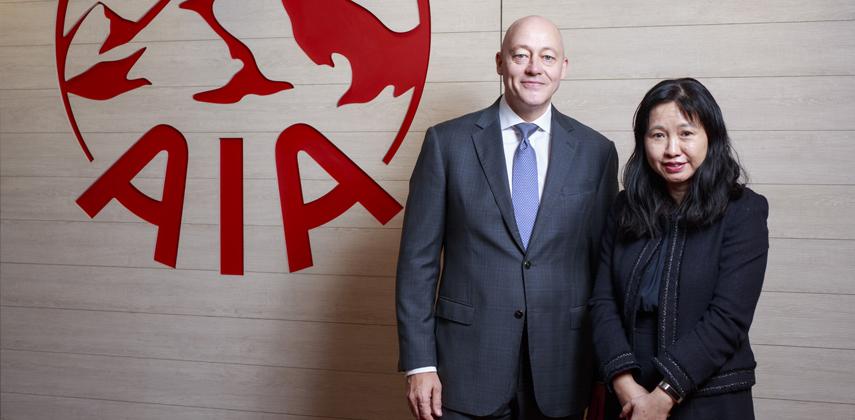Stepping into the AIA Hong Kong office, it is evident to see why the company captured, for the second year in a row, an Aon Best Employers award.
The atmosphere buzzes with excited chat as employees brainstorm ideas at the Brainspa, a one-of-a-kind relaxation and work space. While one group is analysing data, other individuals sit quietly in a relaxing Zen-inspired corner dotted with miniature greenhouses and surrounded by a hydrochloric lettuce growing campaign. Turn the corner, and other staff are picking at an array of food and drinks, each item labelled either a healthy “go” or a not-so-healthy “no go”. While the pancake machine whirs quietly in the corner, another group sits at round tables exchanging ideas and working on upcoming projects.
This image neatly encapsulates what AIA is trying to achieve with its company culture.
“We believe that insurance is a people business, so we have always been very focused on employee engagement and developing our people to create a culture and environment for them to be the best that they can be,” says Peter Crewe, chief executive officer of AIA Hong Kong and Macau.
Aside from creating a positive work environment, another key factor for being a best employer is the company’s relentless focus on its human capital strategy.
Wei Wei Watson, chief human resources officer at AIA Hong Kong and Macau, argues that the company’s human capital strategy is so robust and successful because it is owned by the business, senior management and all the managers.
“The big focus is on people, capability and culture, and we view that as the foundation for our business strategy to be successful,” Watson says.
AIA’s human capital strategy has three components, which work in unison to build a strong corporate culture able to attract and retain the right kind of talent and support business growth.
The first element requires leaders who can articulate the vision and purpose, as well as inspiring and mobilising staff, and shape how people feel when they come to work. There is a great deal of investment in training for the senior management team.
The second element is people development, which focuses on training the workforce and equipping them with the right conditions and skill sets for success. There is also a strong focus on middle managers to ensure that everyone embraces an empowerment style of leadership.
The third element is performance and reward. This revolves around the strategy of “reward, care and growth”. Employees are rewarded based on a short-term incentive scheme, which includes bonuses tied to business performance and KPIs. The other component, which is perhaps more important, is a system of rewards tied to people’s behaviour that encourages staff to respect and treat each other with care and respect. The last component is to provide recognition in the form of mobility and development options that include job rotations and short- and long-term assignments in one of AIA’s many offices across the Asia-Pacific region.
“We measure whether people demonstrate the operating philosophy to do the right thing in the right way with the right people, and the results will come,” Watson says. “We don’t do performance reviews because they focus too much on ratings, which is too traditional. It is not the right tool for us. Instead we have performance development dialogues.”
These dialogues focus on personal development, career goals and aspirations, and enhance internal mobility. Indeed, anyone who has been with the company for a minimum of 18 months is encouraged to move within Hong Kong or to other countries in the AIA network to further their career development.
The result of this human capital strategy is AIA has been able to build a strong workforce that has seen more than 80 per cent of its roles at senior manager level and above being filled internally.
“You can characterise our working environment as high-performance and fast-paced,” Watson says. “People are productive. We deliver a lot and are very committed. We have seen the workforce delivering huge technological changes that take others five years to complete, and which we manage in two.”
The results are also apparent in the company’s bottom line. AIA Group has grown to become the world’s second largest life insurance company, measured by market capitalisation – no small feat.
The value of new business in Hong Kong and Macau was more than US $1.1 billion last year, and operating profit after tax has soared to more than US $1.3 billion. Watson says it is all down to people and culture within the company.
“The unique thing about the workforce is they are a high-performance group who are very committed to delivering amazing results. There’s a loyal group of people who have been with AIA for a long time, which we have supplemented with tremendous new talent to implant contemporary ideas and help sustain our momentum,” Crewe says.
The global Aon Best Employers Awards are now in their 17th year, and were designed to provide insights into how organisations can create a competitive advantage through their people, exploring what makes a company a workplace of choice, and to identify the best employers in Asia.


